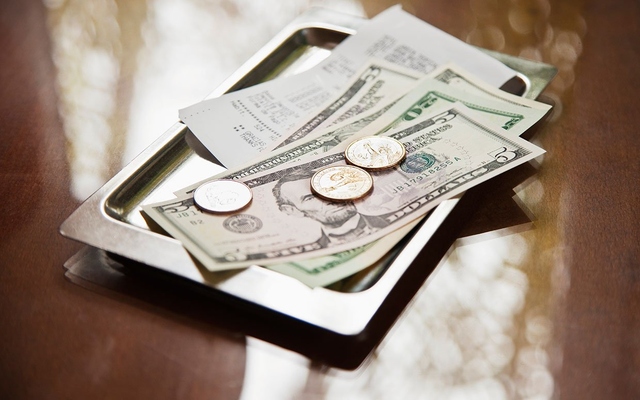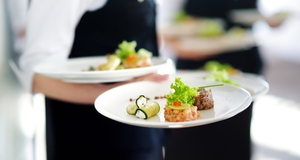How Much Should I Tip? Restaurant Tipping Behavior as a Result of Prior Foodservice Experience
By
2014, Vol. 6 No. 10 | pg. 1/2 | »
IN THIS ARTICLE
KEYWORDS
AbstractTipping is a customary practice in the U.S., but many have questioned why customers are so willing to give money away to a server in the foodservice industry. Previous literature has explored factors that influence tipping behavior, such as social norms, age, gender, ethnicity, and intrinsic and self-presentational reasoning. This study observes a relationship between tipping behavior and prior employment in the foodservice industry. Using survey data from 500 University of Maryland students, the study finds that those who have worked as a waiter or waitress believe that the average tipping percentage is higher than the social norm, generally consider themselves to be ‘good tippers,’ and more strongly feel that it is important to tip when dining out. A tip is a gift or a sum of money offered for a performed or anticipated service. More specifically, a tip in the foodservice industry is when a customer voluntarily leaves a sum of money, apart from the bill, for the service provided by their waiter/waitress. Tipping norms differ around the world. In the U.K., the tip is automatically included in the bill and not left to the discretion of the customer. In Russia and Japan tipping is culturally forbidden whereas in Southern France, tips are the only source of income for servers (Mealey, 2010). In the U.S., tips generally make up more than half of a server’s income (Azar and Tobol, 2008) and tipping is considered a social norm (Conlin, Lynn, and O’Donoghue, 2003). In fact, every year the total amount of restaurant tips exceeds $40 billion (Azar et al., 2008). While it is customary in the U.S. to tip the server, the amount tipped by Americans varies depending on a number of factors. 
From a purely economic perspective, tipping is a contradiction. People should want to maximize their utility and act in a way that is personally beneficial, meaning that people should not voluntarily give away money. This apparent contradiction has made tipping practices in the foodservice industry an interesting topic of study. As such, there exists a large pool of empirical research regarding tipping behavior and the motivations behind tipping. Those who can relate directly through previous personal experience as a waiter/waitress have a better understanding of how important tipping is, and as a result, are more likely to tip well. Tipping in Theory and PracticeConlin, Lynn and O’Donoghue (2003) researched a variety of factors and their influence on tipping behavior to determine if tipping as a social norm promoted efficiency in the restaurant market. The research determined that a circulatory norm existed, in which a server exerts effort if they have some sort of incentive (in which case the incentive is a tip) as the customer incentivizes the server to exert more effort. This norm has a feature in which tipping percentage increases with service quality. Furthermore, the study determined that the tip amount varied in relation to when the meal occurred and the presence of repeated interaction. When restaurants were busiest, on weekends, the quality of service decreased with an increase in orders processed and decrease in speed of service, which lead to a decrease in the tipping percentage. Repeated interaction had both a direct and indirect effect on the tipping percentage. An increase in the amount of times a customer interacted with a server increased the tipping percentage. Moreover, as interactions increased, the quality of service also improved, which led to higher tipping rates. The study also found that the age of the customer and the gender of both the customer and the server had an impact on tipping behavior. On average teenagers and young adults tipped less than adults. Similarly, the tip changed depending upon whether the gender of the server and the customer were the same. A cross-gender dynamic increased tips, meaning that males were more likely to tip female servers more and females were more likely to tip male servers more. Other studies found a relationship between ethnicity, socio-economic status, and tipping behavior. Lynn and Thomas-Haysbert (2003) completed a study on the ethnic differences in tipping and found generally lower tipping rates among African Americans compared to Caucasians. The study also found that while Asians and Hispanics were perceived as poor tippers, only Hispanics actually tipped less than Caucasians on average. Non-Caucasians also varied their tips more depending on bill size and quality of service. However, ethnic differences in tipping were largely explained by Lynn and Williams (2012), who found that differences in black-white tipping existed in close correlation to the socio-economic status of the individual. Moreover, the study determined that as socio-economic status increased, so did awareness of tipping norms (being 15-20%). The study determined that tipping 15-20% in restaurants is in fact a white cultural norm and that as people with low socio-economic status improve their status, their tipping rates increase along with their knowledge of the dominant cultural norm. Another study completed by Lynn (2009) found that people tip for more intrinsic reasons than for self-presentational reasons. For example, the participants were more likely to tip their server to reward good service or help the server than to adhere to the social norm, avoid looking poor or cheap, or to improve their group’s image. Additionally, intrinsic motives for tipping were associated with higher tipping rates and self-presentational motives were associated with lower tipping. The study suggested that prepping a customer by reminding them to reward good service, support their servers, or ‘do the right thing’ would likely increase the tip rate. Therefore, if a server were to mention their children or other things that present them as a deserving recipient, this behavior could motivate their customer to increase their tipping percentage. While the features of tipping as a social norm, the effects of age, gender, and ethnicity on tipping behavior, and the intrinsic and self-presentational movivations for tipping have all been considered, there remains a gap in the literature: how might a customer’s tipping behavior change if they are able to identify with their waiter/waitress through prior experience in the foodservice industry? It seems likely that former experience in the industry would lead to an increased understanding of the importance of tipping, and therefore, higher tipping rates. This idea is examined below.Continued on Next Page » Suggested Reading from Inquiries Journal
Inquiries Journal provides undergraduate and graduate students around the world a platform for the wide dissemination of academic work over a range of core disciplines. Representing the work of students from hundreds of institutions around the globe, Inquiries Journal's large database of academic articles is completely free. Learn more | Blog | Submit Latest in Psychology |


















